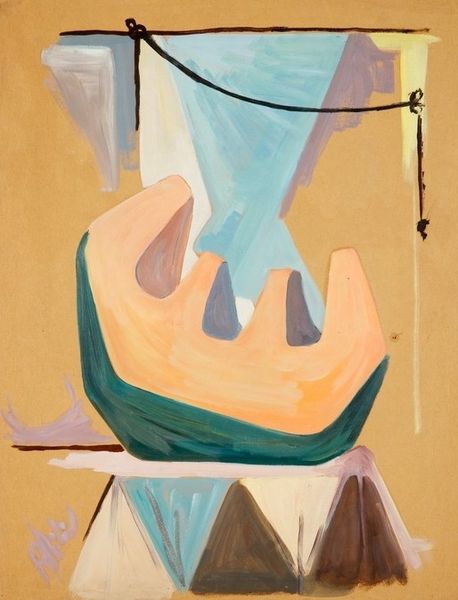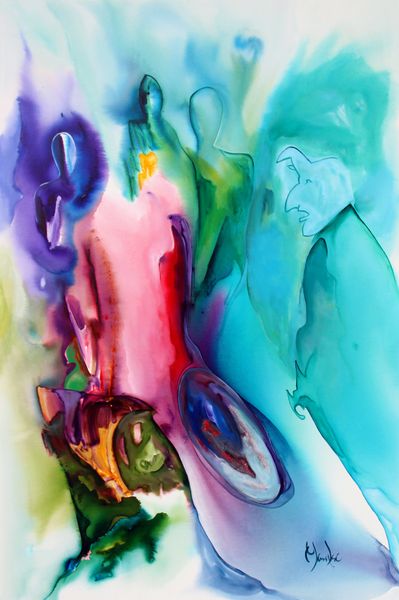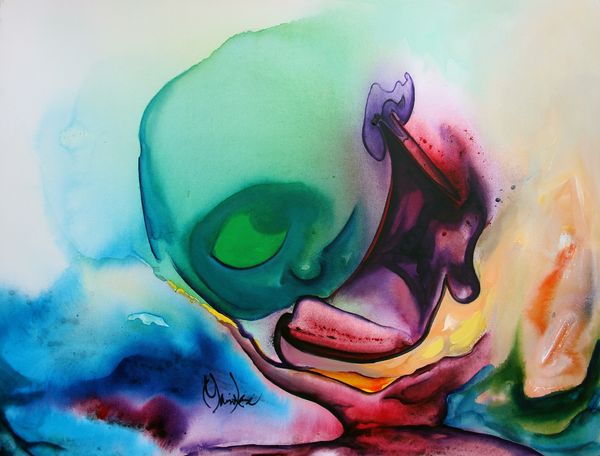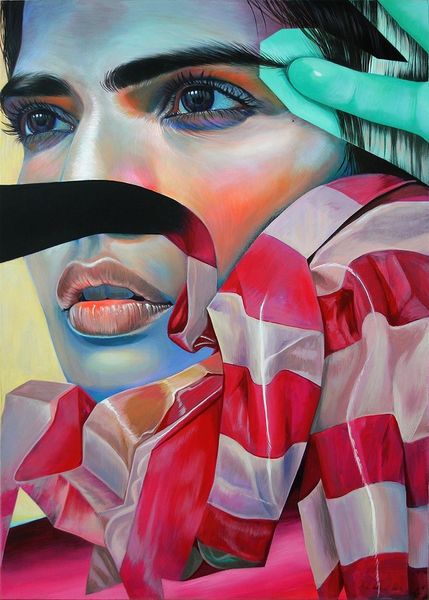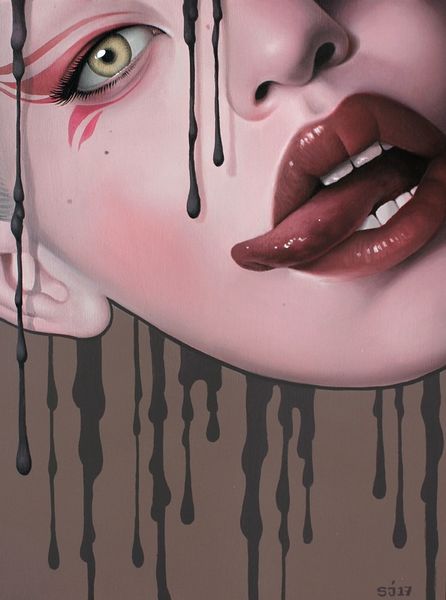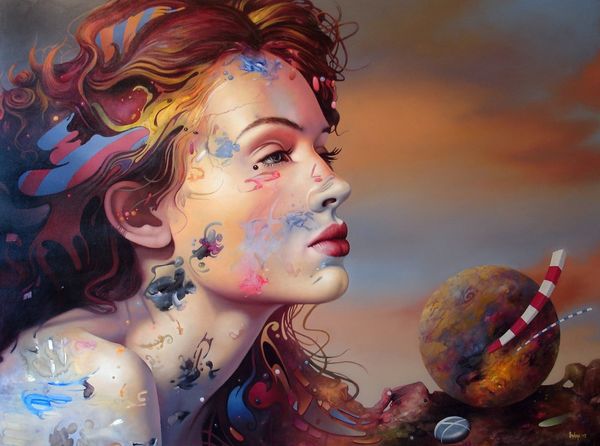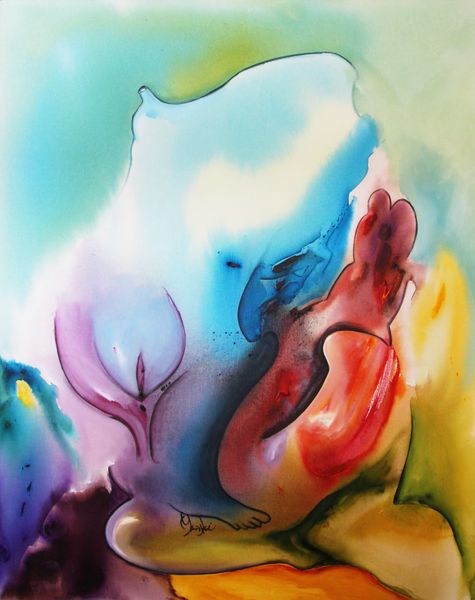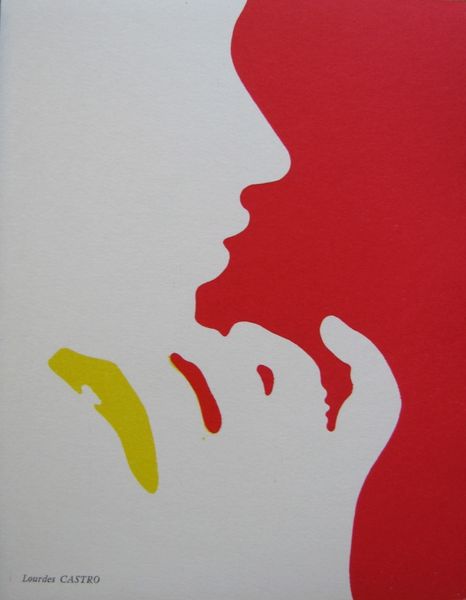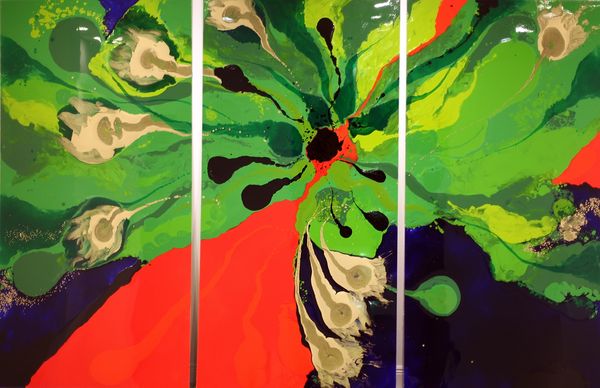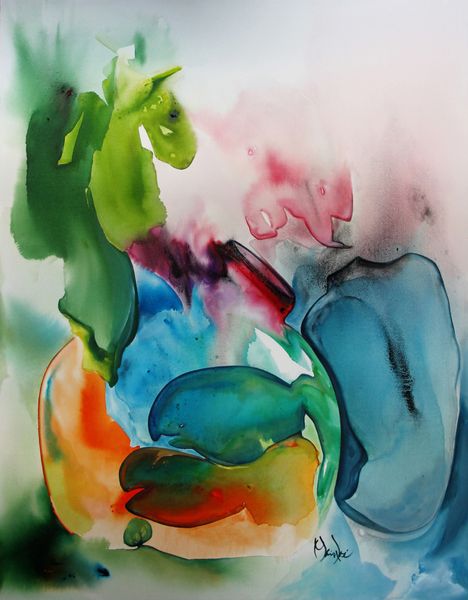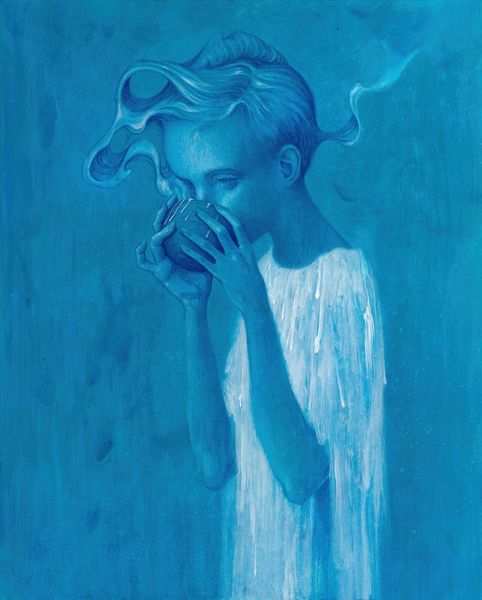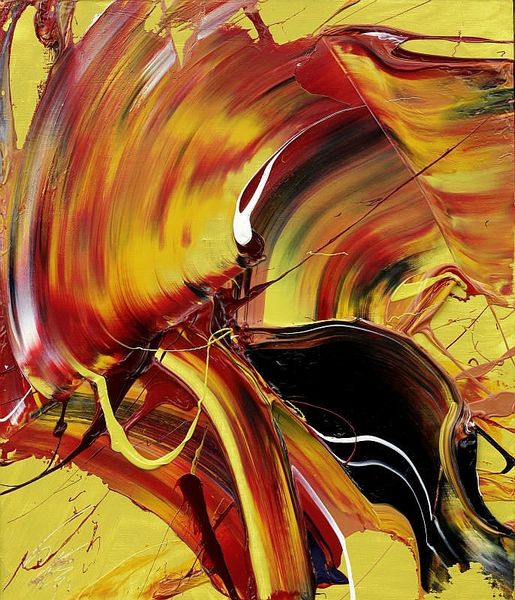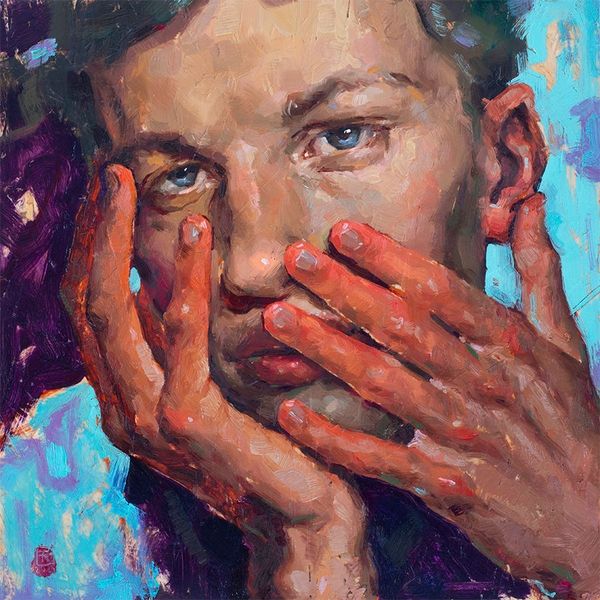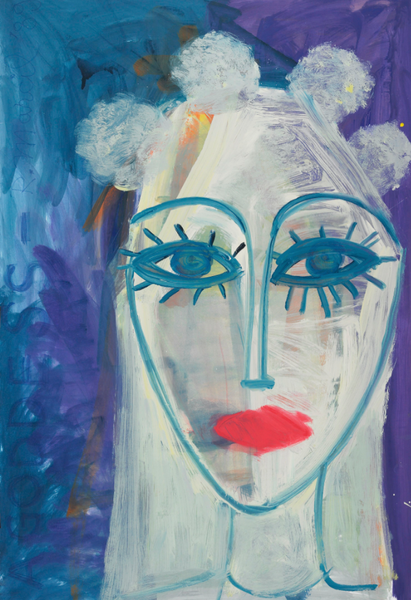
oil-paint
#
portrait
#
oil-paint
#
appropriation
#
figuration
#
oil painting
#
acrylic on canvas
#
pop-art
#
portrait art
#
modernism
#
fine art portrait
Copyright: James Rosenquist,Fair Use
Curator: This is James Rosenquist’s "Hey! Let's Go for a Ride," created in 1961. Rosenquist was a key figure in the Pop Art movement, and this oil-on-canvas work exemplifies his signature use of fragmented imagery. Editor: My immediate impression is… unsettling. The extreme close-up and juxtaposition of disparate elements create a kind of visual overload. It's almost claustrophobic, forcing you right into the subject matter. Curator: Exactly. Rosenquist's background in billboard painting informs that sense of scale and the fragmented view. Notice how he takes ordinary subjects—a woman's face, a Coca-Cola bottle—and blows them up, crops them in ways that distort their familiar context. The result makes us reconsider everyday iconography. Editor: And it really does disrupt the viewer's expectations. The bottle isn't just a bottle; it's become a symbol laden with consumerism. The woman’s forced smile feels similarly hollow and symbolic of that era's cultural emphasis on manufactured happiness. Curator: It's interesting how those images create a kind of cultural palimpsest. That fragmented approach evokes a sense of the disjointed nature of modern life, its constant bombardment of images and information, right? Pop Art was often critical of postwar America's fascination with consumerism and celebrity culture, but it was deeply entrenched in that culture itself. Editor: There's a tension there that gives it a raw energy, which definitely makes you stop and think. It’s not about pretty picture-making; it's actively challenging viewers to unpack the underlying assumptions driving our society. Curator: He does that by pulling imagery from a multitude of places and placing it in conversation within a single artwork, allowing those individual components to create something new when put together. Rosenquist really wanted his art to reach a wide public, disrupting people's relationship to popular imagery, a gesture embedded within American art history and still seen today. Editor: This really does leave one reflecting on the sheer visual power, and political power, art can have in public spaces, on how artists were grappling with those changes even in the early '60s.
Comments
No comments
Be the first to comment and join the conversation on the ultimate creative platform.
